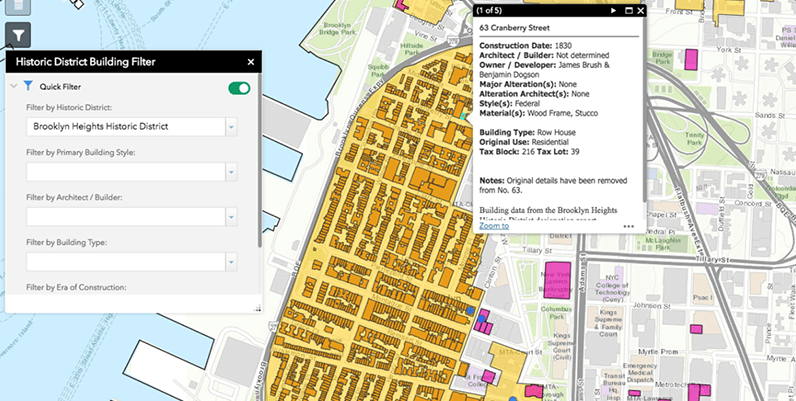The New York City Landmarks Preservation Commission (LPC) launched a new, enhanced version of its interactive map, Discover NYC Landmarks.
For the first time, the map includes easily accessible and detailed information on each of the nearly 34,000 historic buildings within the City’s 141 historic districts. The document makes it easier for the public to explore the city’s wide range of designated historic buildings.
“This information is invaluable to all stakeholders, including homeowners who want to know more about their buildings, community groups, preservation advocates, historians, academics, and anyone who walks through New York City’s neighborhoods and marvels at our buildings,” said Commission Chair Meenakshi Srinivasan.
The map is accessible from computers, smartphones, and tablets.
Data presented includes construction date, architect, style, building type, and original use. Map users can search for properties by characteristics such as architectural style, architect, building type and era of construction.
Related Stories
| May 18, 2011
Lab personnel find comfort in former Winchester gun factory
The former Winchester Repeating Arms Factory in New Haven, Conn., is the new home of PepsiCo’s Biology Innovation Research Laboratory.
| May 18, 2011
Improvements add to Detroit convention center’s appeal
Interior and exterior renovations and updates will make the Detroit Cobo Center more appealing to conventioneers. A new 40,000-sf ballroom will take advantage of the center’s riverfront location, with views of the river and downtown.
| May 18, 2011
Carnegie Hall vaults into the 21st century with a $200 million renovation
Historic Carnegie Hall in New York City is in the midst of a major $200 million renovation that will bring the building up to contemporary standards, increase educational and backstage space, and target LEED Silver.
| Apr 13, 2011
Office interaction was the critical element to Boston buildout
Margulies Perruzzi Architects, Boston, designed the new 11,460-sf offices for consultant Interaction Associates and its nonprofit sister organization, The Interaction Institute for Social Change, inside an old warehouse near Boston’s Seaport Center.












